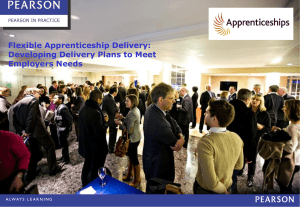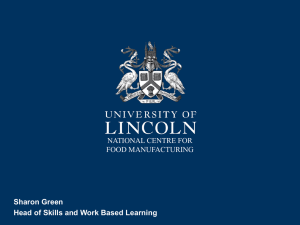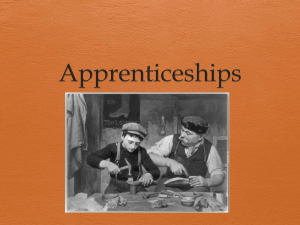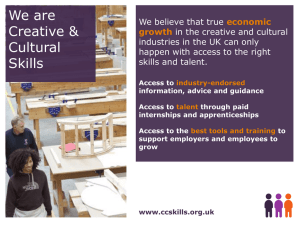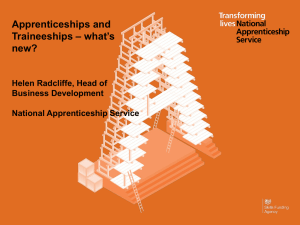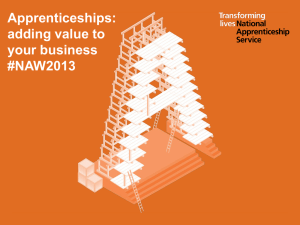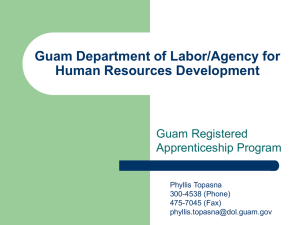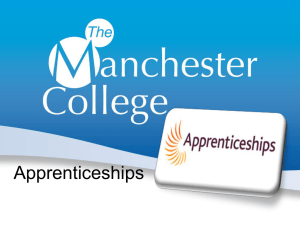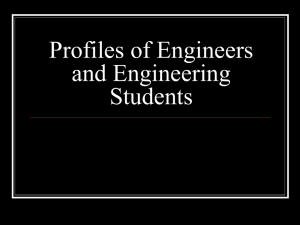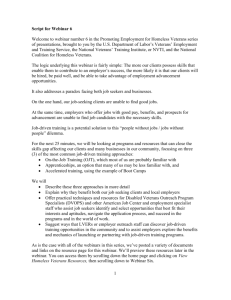Developing a new Trailblazer Standard
advertisement
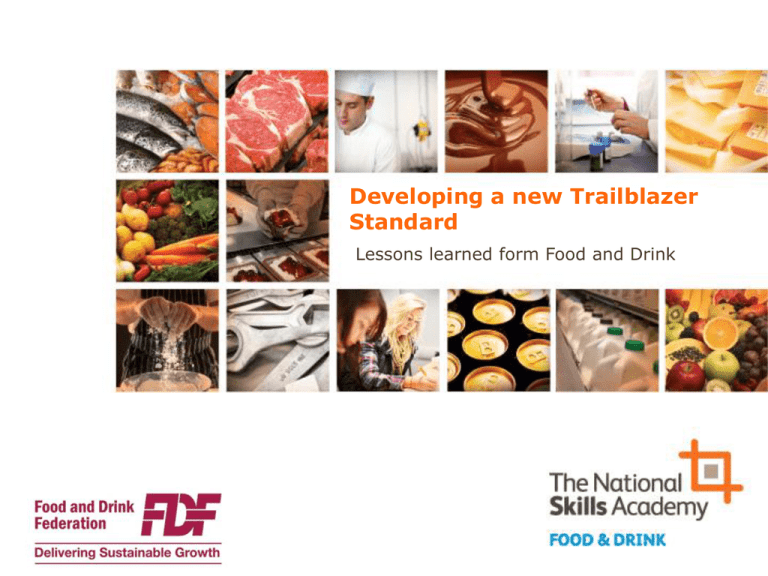
Developing a new Trailblazer Standard Lessons learned form Food and Drink Overview Current Apprenticeships • Developed by employer led SSCs, paid for by govt. and involving wide scale employer consultation across the UK in a regulated and prescribed process • A framework of qualifications based on National Occupational Standards with unit flexibility to reflect competency requirements for individual company jobs • Policy driven requirements of ERR, PLTS and functional skills New Apprenticeships • Developed by groups of employers in England with no payment in an non prescriptive process • A single standard for an apprentice to reach in an occupation irrespective of company approach • No ERR or PLTS requirements Start with the end in mind… • Aim is to produce a written statement of a STANDARD – Two A4 sides (excluding assessment annex) • • Clear, concise, easy-to-follow format and language States requirements for full competence (at a high level) for the occupation. – NOW may include core and options Sufficient content and level that a new entrant to the occupation will need at least 12 months of training Professional registration if relevant Recognised by employers of all sizes as fit for purpose • • • 1. Choosing the Occupation Potential Approaches • • • • Labour Market Intelligence Occupational Map Shared employer group needs Current apprenticeship gaps Beware • Job vs Occupations • Uniqueness • Your Responsibility • • • • Profile of employers involved – generally larger , automated companies in the group Higher levels of automation in the industry Previous experience of problems in training engineers Current apprenticeship felt to not be delivering Food and Drink Maintenance Engineer 2. Developing the Standard • The Mantra – • Express what apprentices should know, and be able to do, at the end of the apprenticeship Potential Approaches – – – – – – Existing standards National Occupational Standards? Job Role descriptions Consultations with employers International standards Links to any Institute entry requirements Food and Drink Maintenance Engineer Utilised 18 months of development of maintenance engineer apprenticeship undertaken by the NSA and the dairy industry as the basis for consultation 2. Developing the Standard • Challenges – Occupations across other industries – Differences across employers –lowest common denominator if you are not careful (no core and options in Round 1) – UK wide requirements – Self determining /restricting /interest group Food and Drink Maintenance Engineer Food and Drink Maintenance engineer became 2 versions: Multi skilled Maintenance Engineer Mechanical maintenance Engineer 2. Developing the Standard • Decisions to make/consider early on – – – – – – – • Should Behaviours be in the standard? Standpoint on grading – can you grade competence? Qualifications- important to include ? English and maths requirement Entry requirements to be allowed to undertake the apprenticeship Learning and Training required Apprenticeship duration Challenge – – To express a simple standard significant work has to take place to identify what is included- and what isn’t Managing any tensions and resolving differences of opinions Food and Drink Behaviours vital Grading seen as a positive development Qualifications vital if young people in other sectors have them (we are all competing for engineers) 3. Developing the assessment approach • Covered by another workshop • The clearer the articulation of the standard in terms of – Knowledge – Skill – Behaviour the easier it is to describe an appropriate assessment approach Questions
